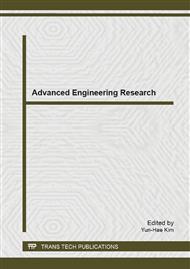p.430
p.439
p.444
p.448
p.453
p.459
p.464
p.471
p.477
Multiple Targets Detection and Acceleration Estimation for Intelligent Transport System
Abstract:
For intelligence transportation system,it is necessary to resolve the problems of multiple targets detection and vehicle longitudinal control with high level response capability. False targets can appearance because of mistaking the combination of these beat frequencies of Frequency Modulate continuous wave radar. A novel waveform named double-slope symmetrical saw-tooth wave is proposed and its corresponding algorithm is also introduced to resolve the problem of multiple targets detection for automotive anti-collision radar. About vehicle longitudinal control, the purpose of this paper is to propose new approach to estimating relative acceleration information for vehicle longitudinal control without inter-vehicle communication. Computer simulation results and theoretical analysis proved that the proposed methods are effective and practical for multiple targets detection and acceleration estimation in intelligence transportation system.
Info:
Periodical:
Pages:
453-458
Citation:
Online since:
April 2014
Authors:
Price:
Сopyright:
© 2014 Trans Tech Publications Ltd. All Rights Reserved
Share:
Citation:


